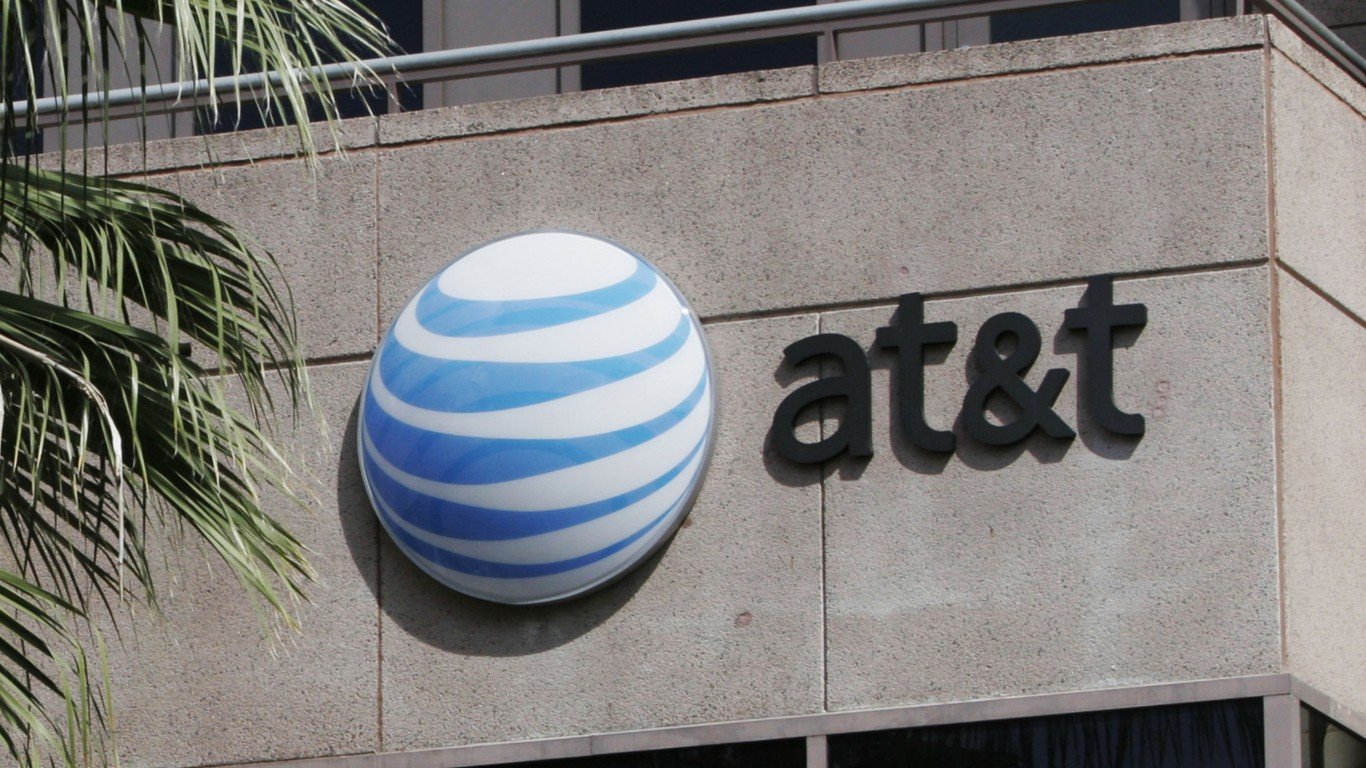Why Walmart Is So Loved After Earnings, and Why It’s Beating Amazon in 2019
August 17, 2019 by Jon C. OggWalmart Inc. (NYSE: WMT) managed to save what otherwise would have been a very weak open to the trading session on Thursday when its earnings of $1.27 per share on revenues of $130.4 billion beat analyst expectations. Walmart’s domestic comparable store sales growth of 7.3% was also the strongest gain in a decade, driven in part by e-commerce sales up 37% versus the second quarter a year earlier. Walmart’s fiscal year 2020 is now calling for a slight increase or decrease from its prior low-single-digit percentage decline, and the retail giant is calling for U.S. comparable sales growth in the upper part of its 2.5% to 3.0% range.
While 24/7 Wall St. covered Walmart’s earnings and guidance in depth, what matters for the rest of 2019 is that Walmart still seems to be largely immune to the growth and dominance of Amazon.com Inc. (NASDAQ: AMZN). Go look at most other retailers, and it seems the only companies avoiding the Amazon and online-only sales pressure are specialty and discount retailers. With the S&P 500 still up about 15% so far in 2019, despite the sell-off and market volatility that we have seen in May and again in August, Walmart’s year-to-date gain of 21% is about two percentage points above the gains of Amazon in 2019.
After shares hit a 52-week and all-time high of $115.49 in July, Walmart’s pre-earnings close of $106.20 a share jumped to $112.69 on Thursday, and then they closed up another 30 cents at $112.99, after hitting an intraday high of $114.93, with Friday’s 1.4% gain in the S&P 500 and 1.2% gain in the Dow Jones industrials.
We have tracked multiple analyst views on Walmart in the wake of its earnings report. Several firms reiterated their positive ratings and upside targets: BMO Capital Markets with its Outperform rating and $125 target price, Goldman Sachs with its Buy rating and a $123 target, and Guggenheim’s Buy rating and $125 target.
Merrill Lynch is one of the most aggressive of the larger firms when it comes to upside ahead for Walmart. The firm has a Buy rating and raised its price objective to $135 from $120. On top of strong grocery trends, Merrill Lynch saw general merchandise strength being aided by strength in home, toys and wireless, offsetting softness in weather-sensitive categories. Its margin gain with lower operating expenses also showed that the stores leveraged expenses for the 10th straight quarter, along with increased private label sales penetration and lower transportation costs. Merrill’s investment rationale says:
We believe Walmart’s omni-channel transformation in the U.S. will continue to gain momentum and support more sustainable and predictable positive same-store sales and traffic at U.S. Supercenters and U.S. e-commerce and gross merchandise value growth that should support P/E multiple expansion.
CFRA reiterated its Buy rating and $125 target, and here is what it said about its earnings beat and also about tariffs:
Walmart possesses a stellar earnings track record, having now beaten consensus in 15 of the past 16 quarters. While we acknowledge concerns regarding tariffs and consumer trends that may be peaking, we remind investors that Walmart is a more defensive, consumer staples name because of its grocery exposure.
Multiple firms have raised their price targets on Walmart with continued positive Buy and Outperform ratings:
- Citigroup reiterated its Buy rating and raised its target price to $129 from $115.
- KeyBanc Capital Markets has an Overweight rating and raised its target to $128 from $125.
- Raymond James has an Outperform rating and raised its price target to $120 from $110.
- Robert W. Baird reiterated its Outperform rating and raised its target from $115 to $120.
- Telsey Advisory also reiterated its Outperform rating, raising its target to $125 from $118.
Other firms are less aggressive but that still raised their targets:
- Independent Research raised its target to $120 from $107.
- RBC Capital Markets raised its target from $112 to $115.
- Stifel raised its price target to $107 from $105.
- UBS raised its price target to $115 from $107.
Credit Suisse has a Neutral rating, but it raised its target to $105 from $103, which makes it the lowest target among the analysts we have featured from the larger firms on Wall Street. Interestingly, most of its commentary in that call, particularly around the U.S. aspect, was positive and talking about gains in market share and other continued improvements.
With a market cap of $322.5 billion, Walmart has a $2.12 annualized dividend per share that generates a current yield of almost 1.9%, based on the $112.99 closing price. That compares to a Refinitiv consensus analyst estimate of $4.87 EPS this year and $5.10 for next year, which also values Walmart at about 22.5 times its blended forward earnings expectations.
It may seem counterintuitive to many investors that Walmart shares are actually doing better than Amazon’s shares, considering that Amazon’s growth generally is expected to be faster and that it also includes Amazon Web Services. That said, Amazon’s gain of 0.9% to $1,792.57 on Friday comes with a market cap of $887 billion, and Amazon’s stock is still down about 12.5% from its recent high of $2,050.50.
Sponsored: Want to Retire Early? Here’s a Great First Step
Want retirement to come a few years earlier than you’d planned? Or are you ready to retire now, but want an extra set of eyes on your finances?
Now you can speak with up to 3 financial experts in your area for FREE. By simply clicking here you can begin to match with financial professionals who can help you build your plan to retire early. And the best part? The first conversation with them is free.
Click here to match with up to 3 financial pros who would be excited to help you make financial decisions.
 24/7 Wall St.
24/7 Wall St.